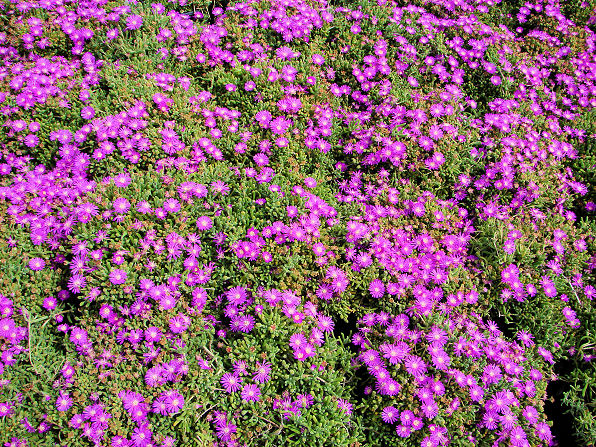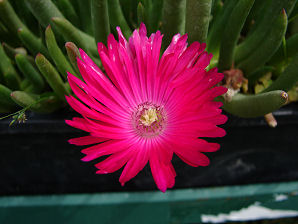Xeriscape Landscaping Plants For The Arizona Desert Environment.
Pictures, Photos, Information, Descriptions,
Images, & Reviews.
Groundcovers.
Ice Plant, Lampranthus spectabilis.
We Are Proud Of Our SafeSurf Rating!
Click On Any Of The Following Links By Amazon.Com
For Books, & Videos About Wildflowers Of Arizona & The Southwest USA. No Obligation!
 |
| Ice Plant, Lampranthus spectabilis. March 27, 2006. |
|---|
 | |
| Ice Plant, Lampranthus spectabilis. | Ice Plant, Lampranthus spectabilis. |
|---|---|
 |  |
| Ice Plant, Lampranthus spectabilis. | Ice Plant, Lampranthus spectabilis. |
 | |
| Ice Plant, Lampranthus spectabilis. | Ice Plant, Lampranthus spectabilis. |
| Ice Plant, Lampranthus spectabilis. | Ice Plant, Lampranthus spectabilis. |
 /
/

Ice Plant.
We wish to thank Wikipedia, the free encyclopedia for some of the information on this page. We share images and information with Wikipedia. Ice plant is a succulent - meaning it has thick leaves that are watery inside - with daisy-like flowers. It's a good ground cover for hot, dry areas. While it should be listed on our succulent page, theMunicipal Water Users Association lists it in their groundcover booklet. Therefore we will list it on our groundcover page. Ice plant belongs to the genus, Lampranthus. Lampranthus is a fairly large genus of about 150 species coming from South Africa. Lampranthus contains some of the most beautiful bright flowers of the succulent world, and it is widely used as ground cover, either as an annual or perennial. Several species are commonly used for landscaping in Arizona and vary from shrubby to trailing, and they vary as to the length of their flowering period. All the different species tend to become woody as they get older. They need a lot of sun, but in very hot climates like Phoenix, in summer, they will need shade and regular watering for a part of the day in order to survive the summer. Most of the varieties available in nurseries are hybrids. There are so many different choices that we will simply show a sample of them on this page. The flowers of Lampranthus usually grow at the stem tips and need sun to open. They come in an array of colors including yellow, scarlet, magenta, red, and orange. The leaves of Lampranthus are usually green, blue-green and fleshy. In the spring, this plant is blanketed by flowers. Some of these flowers grow up to 2 inches across and are followed by fleshy fruits, which are woody when ripe.
Quick Notes:
Height: Height about 1 - 2 feet. Spreading about 2 - 4 feet.
Flowers: An array of colors including yellow, scarlet, magenta, red, and orange.
Flowering Time: Mid March - April.
Leaves: Evergreen, usually green, blue-green and fleshy.
Found: Native to native to South Africa, Lesotho and Swaziland. We see it throughout lower to higher elevations in Arizona as a landscape plant. The USDA claims it is native of the USA (CA).
Hardiness:
Soil pH requirements:
Sun Exposure:
Elevation: 0 to 2,900 feet In Arizona. In its native habitats, it is usually between 1,800 to 2,300 feet.
Habitat: Well-drained, sandy, poor to moderately fertile soils. A Xeriscape Landscape plant.
Miscellaneous: Flowering Photos Taken March 27, 2006. Peoria, Arizona. An ideal xeriscape landscape plant at low elevations in Arizona.
|



We Are Proud Of Our SafeSurf Rating!
Click On Any Of The Following Links By Amazon.Com
For Books, & Videos About Xerioscape Plants Of Arizona & The Southwest USA. No Obligation!
Back To Arizona Xeriscape Landscaping Main Page.
Back To Xeriscape Groundcovers Page Two.
Back To Arizona Wild Flowers Home Page
Back To DeLange Home Page
© 1966 - Present, Audrey, Eve, & George DeLange
| © 1966 - Present, Audrey, Eve, & George DeLange |


